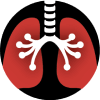- Article
- Source: Campus Sanofi
- May 20, 2025
Impact on Patients

cGVHD has a significant impact on the overall well-being of patients
cGVHD impacts patients' QOL
The inflammation and fibrosis associated with chronic graft-versus-host disease lead to multiple physical ailments, some of which include
.png)
Skin thickening or tightening, as well as painful rashes and lesions on the skin1-3
.png)
Joint stiffness and loss of mobility and dexterity2
.png)
Ocular dysfunction3
.png)
Lung function impairment, which leads to significant
morbidity3-6
Results from multiple studies show that patients with cGVHD reported significantly worse QOL, as measured by various tools, such as the Lee Symptom Scale, the SF-36 and the FACT-BMT.7,8
A multicenter, prospective, observational cohort study evaluated 298 patients with cGVHD. When compared with age- and sex-matched US population normative data, patients with cGVHD had significantly lower scores, as measured by the SF-36 and the FACT-BMT, for8
.png)
PHYSICAL FUNCTIONING
.png)
ROLE PHYSICAL
.png)
BODILY PAIN
.png)
GENERAL HEALTH
.png)
VITALITY
.png)
SOCIAL FUNCTIONING
.png)
PCS
When comparing mean SF-36 scores of patients with moderate to severe cGVHD with those of other chronic health conditions, patients with cGVHD had PCS comparable with8
✓ Systemic sclerosis
✓ Systemic lupus erythematosus
✓ Multiple sclerosis
Patients with moderate to severe cGVHD also showed greater impairment when compared with other conditions, including8
✓ Chronic lung disease
✓ Hypertension
✓ Diabetes
✓ Arthritis
Fibrosis, in particular, has a negative effect on QOL, especially when affecting the joints or extensive areas of the skin.2,9 This can lead to chronic disability and, in cases where fibrosis spreads to organs such as the lungs, significant mortality.4-6
cGVHD, chronic graft-versus-host disease; FACT-BMT, Functional Assessment of Cancer Therapy-Bone Marrow Transplant; HCT, hematopoietic cell transplant; MCS, mental component score(s); PCS, physical component score(s); QOL, quality of life; SF-36, 36-Item Short-Form Survey.
-
Fiuza-Luces C, Simpson RJ, Ramírez M, Lucia A, Berger NA. Physical function and quality of life in patients with chronic GvHD: a summary of preclinical and clinical studies and a call for exercise intervention trials in patients. Bone Marrow Transplant. 2016;51(1):13-26. doi:10.1038/bmt.2015.195
-
Martires KJ, Baird K, Steinberg SM, et al. Sclerotic-type chronic GVHD of the skin: clinical risk factors, laboratory markers, and burden of disease. Blood. 2011;118(15):4250-4257. doi:10.1182/blood-2011-04-350249
-
Henden AS, Hill GR. Cytokines in graft-versus-host disease. J Immunol. 2015;194(10):4606-4612. doi:10.4049/jimmunol.1500117
-
Arora M, Cutler CS, Jagasia MH, et al. Late acute and chronic graft-versus-host disease after allogeneic hematopoietic cell transplantation. Biol Blood Marrow Transplant. 2016;22(3):449-455. doi:10.1016/j.bbmt.2015.10.018
-
Inagaki J, Moritake H, Nishikawa T, et al. Long-term morbidity and mortality in children with chronic graft-versus-host disease classified by National Institutes of Health Consensus Criteria after allogeneic hematopoietic stem cell transplantation. Biol Blood Marrow Transplant. 2015;21(11):1973-1980. doi:10.1016/j.bbmt.2015.07.025
-
Au BKC, Au MA, Chien JW. Bronchiolitis obliterans syndrome epidemiology after allogeneic hematopoietic cell transplantation. Biol Blood Marrow Transplant. 2011;17(7):1072-1078. doi:10.1016/j.bbmt.2010.11.018
-
Lee SJ, Onstad L, Chow EJ, et al. Patient-reported outcomes and health status associated with chronic graft-versus-host disease. Haematologica. 2018;103(9):1535-1541. doi:10.3324/haematol.2018.192930
-
Pidala J, Kurland B, Chai X, et al. Patient-reported quality of life is associated with severity of chronic graft-versus-host disease as measured by NIH criteria: report on baseline data from the Chronic GVHD Consortium. Blood. 2011;117(17):4651-4657. doi:10.1182/blood-2010-11-319509
-
Baird K, Steinberg SM, Grkovic L, et al. National Institutes of Health chronic graft-versus-host disease staging in severely affected patients: organ and global scoring correlate with established indicators of disease severity and prognosis. Biol Blood Marrow Transplant. 2013;19(4):632-639. doi:10.1016/j.bbmt.2013.01.013
-
Waldman L, Traeger L, Fishman S, et al. Psychological distress in patients with moderate to severe chronic graft-versus-host disease (cGVHD). J Clin Oncol. 2010;36(suppl 15). doi:10.1200/JCO.2018.36.15_suppl.e22137
-
Khera N, Hamilton BK, Pidala JA, et al. Employment, insurance, and financial experiences of patients with chronic graft-versus-host disease in North America. Biol Blood Marrow Transplant. 2019;25(3):599-605. doi:10.1016/j.bbmt.2018.09.040
-
Jones CA, Fernandez LP, Weimersheimer P, et al. Estimating the burden of cost in chronic graft-versus-host disease: a human capital approach. JHEOR. 2016;4(2):113-118. doi:10.36469/9814
-
Wong FL, Francisco L, Togawa K, et al. Long-term recovery after hematopoietic cell transplantation: predictors of quality-of-life concerns. Blood. 2010;115(12):2508-2519. doi:10.1182/blood-2009-06-225631
MAT-SA-2300860/v2/March2024